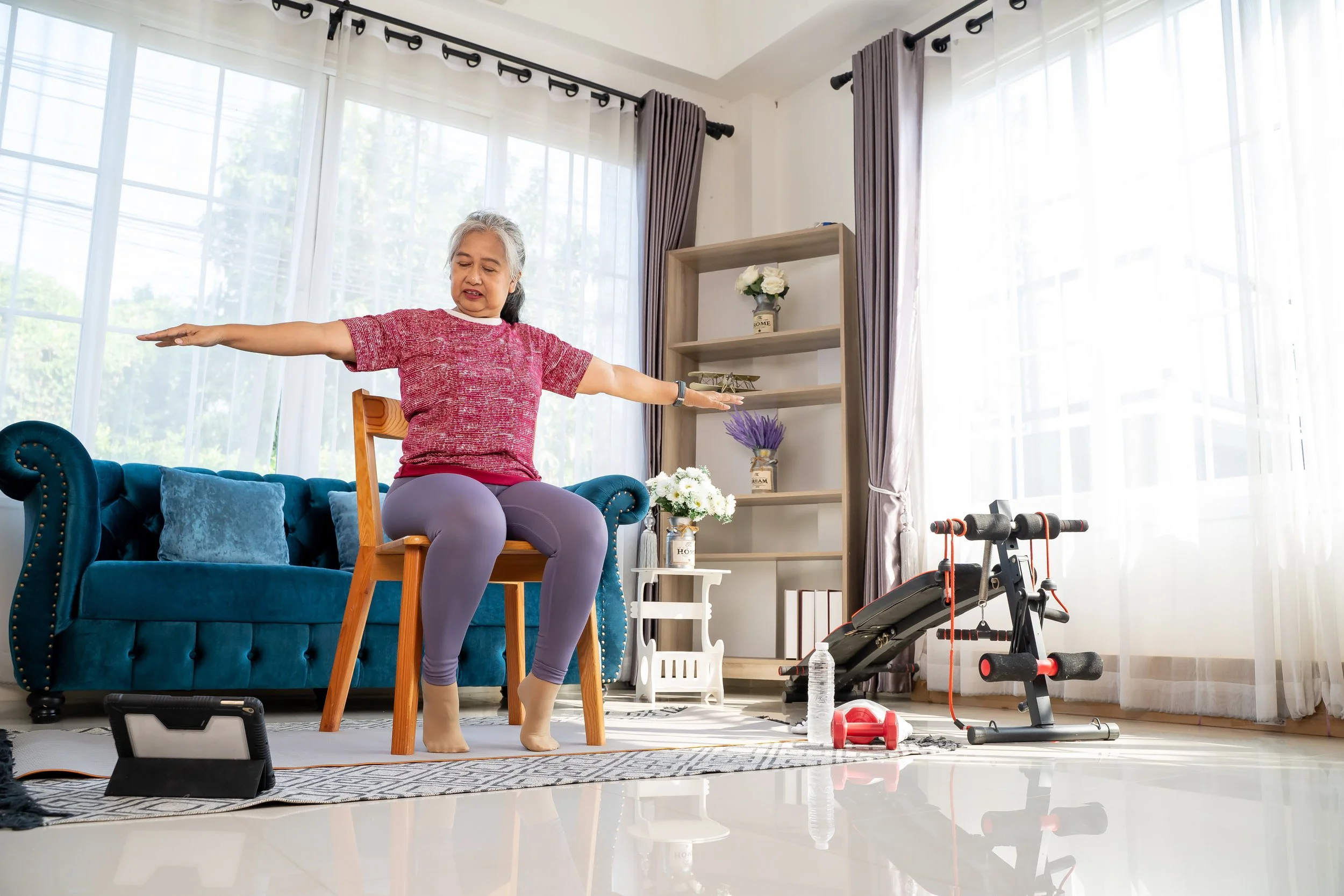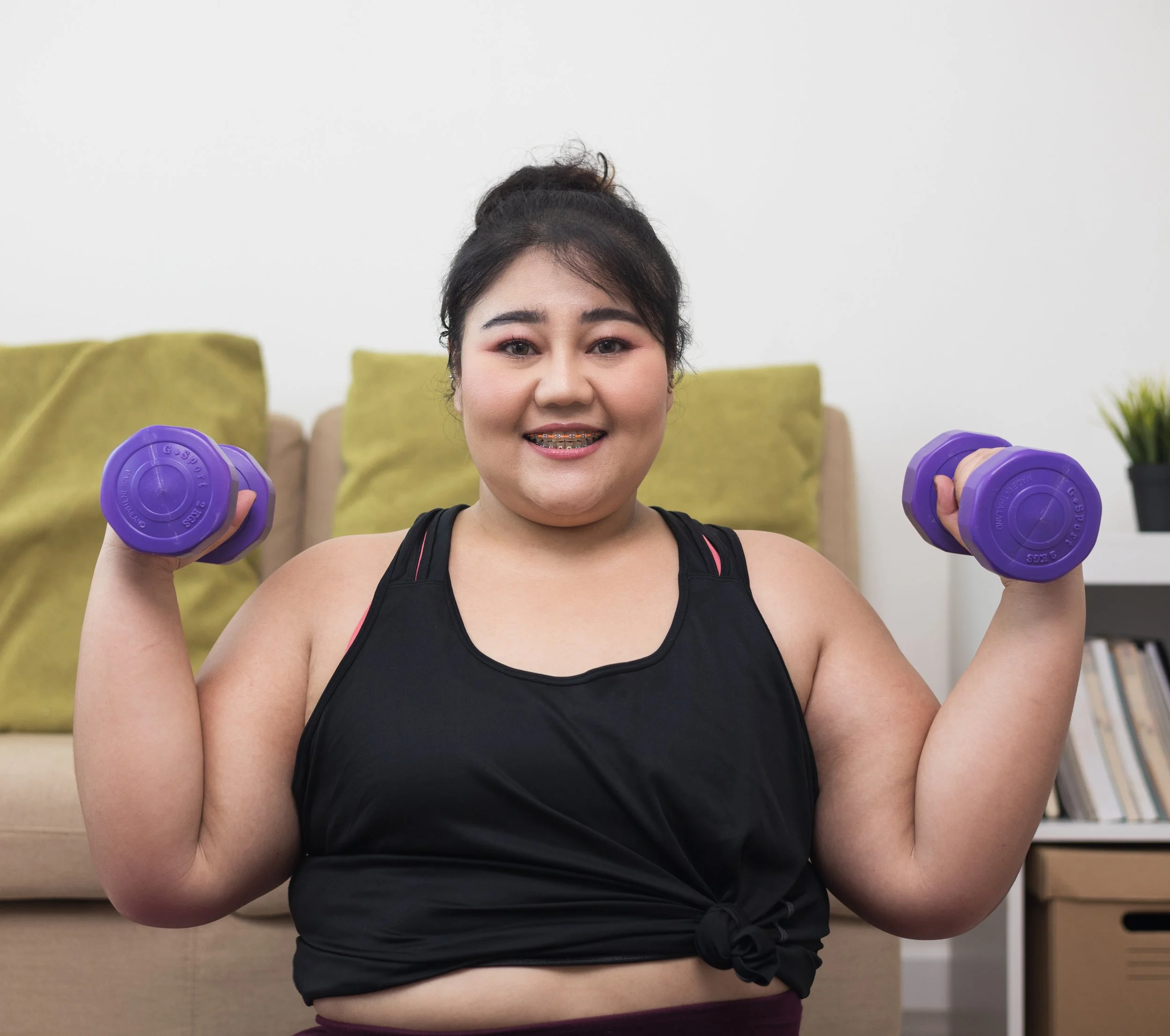How to safely strength train when you have hypermobility
By Sarah Petty
What is hypermobility?
In general, hypermobility is described as an unusually high range of motion in one or more joints. Hypermobility is hereditary - this often means you may not realize your range of motion is considered unusual because people in your family also exhibit it.
Hypermobility isn’t a disease or syndrome, but rather an experience that may be present with or part of specific diseases and syndromes. People with hypermobility often experience frequent injury, chronic pain, and altered joint position that can cause general frustration or short term distress.
There is a wide spectrum of severity with hypermobility, ranging from Benign Joint Hypermobility Syndrome (mild to no pain or injury) to hypermobility as part of Ehler’s-Danlos syndrome or Marfan syndrome (challenging connective tissue disorders).
Examples of joint hypermobility. Image cred: The Ehlers Danlos Society
How does hypermobility affect movement?
Hypermobility can affect movement with challenges ranging from mild to significant. Here is a short list the primary ways it can impact how you move:
Reduced proprioception - Hypermobility affects your awareness of your body in space. This can cause challenges with balance, awareness of joint position, and higher likelihood of bumping into things. It also means you may find certain movements or combinations of movements to feel unusually difficult, and multitasking a mental challenge while doing a physical challenge may be exceptionally hard.
Fatigue - Hypermobile bodies experience a stronger reaction to normal impact. Movements like running, jumping, plyometrics, and olympic lifting may require more rest during the workout to move without injury, as well as more recovery time.
Lower bone mass - Long-term effects of hypermobility include differences in managing bone mineral density and bone mass. This can put you at higher risk for osteoporosis and bone breaks. It’s important to move in a way that mitigates this risk.
Physiology Specifics
Want to know the nitty-gritty? These are some of the specific physiological processes happening with hypermobility. Knowing these details can change how you experience your workouts and help you adapt your movement practice to better support your body.
Overstretched + tight muscles. Joints that have a higher range of motion than typical cause the muscles around them to not have to perform as big of a range of motion every time they contract and relax. This often creates a situation where muscles feel tight, but static stretching doesn't help because the joints accommodate instead of the muscles stretching themselves.
Under/Overused Muscles. Differences in joint function cause some muscles to be underutilized due to joint range of motion (see previous bullet point), while other muscles work harder than they’re meant to as they attempt to stabilize the joint. This increases risk of injury as muscle gradually become chronically overworked.
Poor Muscle Control. Tension, overstretching and underused muscles lead to poor overall control. This can look like jerking around instead of a controlled motion, or inconsistent speed when trying to move slow & steady.
Nerve Compression. Nerves passing through/near a hypermobility joint may be compressed (over time, or due to sudden change in joint range of motion). This causes pain, numbness, and tingling.
Inflammation. Excessive joint range of motion and resulting muscle overuse create extra inflammation near the joint, due to soft tissue injury (mild or severe) and constant muscle repair. Short-term, your body expends extra energy attempting to heal itself, but the job is never done. Long-term, this can cause more damage to the joint.
High/Low Sensation. Nociceptors (nerve receptors) transmit many sensations, commenting movement beyond normal range, injury, and presence of inflammation to the brain. The brain may heighten or suppress these signals. In hypermobile joints, nociceptors can create sensations at inappropriate times, and the brain may interpret these sensations as discomfort or pain when there is no injury occurring. Alternatively, the brain may interpret accurate nociception (when range of motion has gone too far, or mild soft tissue injury has occurred) as intense pain rather than mild discomfort.
The Vicious Cycle
In response to pain/injury, most people are told to avoid the offending movement. Rest, ice, compress, and elevate. Return to movement gradually. For hypermobile individuals who are at increased risk of frequent mild to moderate injury, this advice becomes a problem. Like an “elimination diet” of movement, this approach leads to fewer and fewer movement options and ultimately, a reduction in strength, mobility, bone density, and muscle mass.
I call this the Vicious Cycle: increased joint mobility, leading to injury, leading to reduced movement, leading to less “normal” sensory input as movement is avoided, leading to lack of proprioception (body awareness that comes from movement), circling back to increased joint mobility due to less proprioceptive feedback in the body.
Strength Training is the Solution
There are three key ways strength training is THE primary solution for hypermobility:
Improved quality of life.
As appropriate training progresses, strength and capacity improve. This mitigates the effects of lower activity and age-related loss of muscle mass and bone density. Translation: you’ll feel sturdy, capable, and more able to participate in the activities you love.
Pain reduction.
Strength training improves joint and muscle health, and tolerance of discomfort. Your brain gets more practice translating signals from your nociceptors, reducing inappropriate pain response.
Lower risk of injury.
Strength training improves muscle control and proprioceptive awareness, so you are better able to adapt to changes around you more easily. It also improves muscle stamina and joint stability, so you are less likely to trip and fall due to fatigue or a sudden change in range of motion.
Tools that Help
Each of these are specific ways of moving that support hypermobile joints. Some may be more helpful than others for your unique body, so use your best judgement.
Resistance band - offers consistent sensory feedback, and increased resistance with increased range of motion. A few moves you can do with a resistance band for increased feedback during the move: bicep curl, overhead press, row, pullapart, deadlift.
Closed kinetic chain movements - a fixed portion of the body offers stability and more sensory feedback than when your whole body moves. Example CKC moves: squat, deadlift, wall sit, plank, pushup, pullup.
Eccentric focus - slow down the descent portion of the movement to build control in the muscle and brace the joint. Example: Count to 3 on the way down in your squat, then stand up as usual.
Isometric focus - muscle contraction with no joint movement allows for increased sensory feedback and muscle control. Example moves: wall sit, plank, paused squat/curl/row, top of a glute bridge.
What NOT to do:
compound or complex movements (without establishing safe technique over time)
too much, too fast (heavy lifting without progressive approach, or high reps without baseline weekly volume)
high impact/intensity (without appropriate adaptation, i.e. jumping skiing, running, HIIT, AMRAP, RPE 9-10)
effort/volume/load (prioritized over technique/alignment/form)
high repetition/duration (while mind is tuned out, lower proprioception = higher risk of injury)
insufficient rest (during the workout AND between workouts)
3 things to prioritize:
Appropriate load: Adjust based on your experience, sleep quality, stress level, pain level, fatigue, etc.
Time under tension: Prioritize eccentric and isometric movements, and move slower than you think you need to when trying something new (this is hard for many people).
Sensation Awareness: Pay attention to how your body feels. When you notice yourself zoning out or avoiding sensation, try to tune back in. Your sensory feedback is important!
Resources:
The Hypermobility Sendromes Association
PowerUP Coaching (we have hypermobility AND lots of experience training clients with hypermobility)




